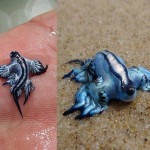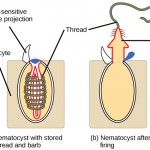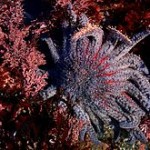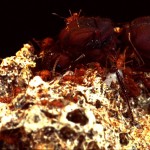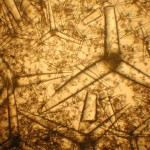Snails. They're slow and boring. We regularly use "snail-like" as an adjective to diss something for being so slow - hardly a positive connotation. What could be so exciting about snails? For starters, what about the fact that they're basically moving fortresses? Okay, maybe this doesn't impress you. Turtles have the same thing going for them, after all.
Reason #1: The radula.
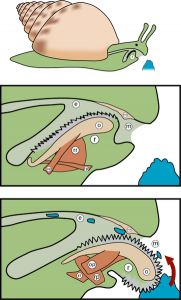 Gastropods have a radula, or rows of teeth, that cover an odontophore, a bone-like structure, in the snail's mouth. A snail can protrude its odontophere; this would be kind of like if your tongue was covered in rows of teeth. Not that impressive, maybe, except a snail can move the rows of teeth back and forth like a freaking saw; the mouthward-facing blades mercilessly bring pieces of food back toward the mouth. Worn-down teeth are reabsorbed beneath the tongue and new teeth are formed on top of the tongue in the back, almost similar to a shark. As if sawing teeth weren't awesome enough, some carnivorous snails, like Conus imperialis, have turned their teeth into poison-filled harpoons. The snail quickly strikes the prey with a neurotoxin-bathed tooth, which becomes embedded in the prey's flesh. Conus imperialis will devour an entire fish whole after it has been immobilized; in fact, some of these snail-made poisons are capable of killing humans. That's right. A snail could kill you.
Gastropods have a radula, or rows of teeth, that cover an odontophore, a bone-like structure, in the snail's mouth. A snail can protrude its odontophere; this would be kind of like if your tongue was covered in rows of teeth. Not that impressive, maybe, except a snail can move the rows of teeth back and forth like a freaking saw; the mouthward-facing blades mercilessly bring pieces of food back toward the mouth. Worn-down teeth are reabsorbed beneath the tongue and new teeth are formed on top of the tongue in the back, almost similar to a shark. As if sawing teeth weren't awesome enough, some carnivorous snails, like Conus imperialis, have turned their teeth into poison-filled harpoons. The snail quickly strikes the prey with a neurotoxin-bathed tooth, which becomes embedded in the prey's flesh. Conus imperialis will devour an entire fish whole after it has been immobilized; in fact, some of these snail-made poisons are capable of killing humans. That's right. A snail could kill you.
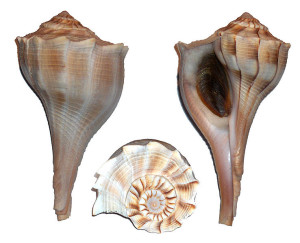 Reason #2: Death shells.
Reason #2: Death shells.
Imagine you're sitting in your house one day, chilling on the bed and enjoying a snack, when suddenly a giant shell uses its blade-like edge to smash your roof in half; then, using the same technique, it decapitates you. That's what some whelks, or busycons, do to clams. After hunting down their prey using chemoreceptors, the snail uses its muscular foot to raise its shell in the air, then slam down the shell's edge onto the clam's shell, breaking away a piece of the clam's shell. The snail repeats this technique, chipping away until the clam breaks open. The snail then uses the same move one last time, delivering a final blow that slices the clam's fleshy body in half. Having finished its work, the snail feasts. Equally as cool are the oyster drills, which as their name implies, dissolve holes into oyster shells and then sucks the meat through; incidentally, these holes make great necklace holes on the victim's shell
Reason #3: Using your opponent's weapons.
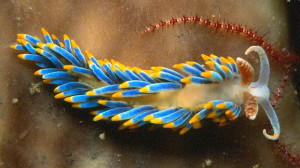 Jellyfish produce stinging cells (called nematocysts) that deter predators and immobilize prey; some stinging cells, like those of the Portugese man of war, can seriously injure humans. However, nematocysts are little help against the nudibranch, a shell-less gastropod that eats a small jellyfish. The jellyfish deploys nematocysts as it fights in vain for its life, but the nudibranch simply laughs and eats its sweet mesoglea-filled body. The nudibranch doesn't stop there, however; rubbing salt into the jellyfish wound, the nudibranch proceeds to incorporate the nematocysts -- which failed to protect their creator -- into its slug-like body as a defense. Wild West style, the nudibranch kills a man and then uses his guns.
Jellyfish produce stinging cells (called nematocysts) that deter predators and immobilize prey; some stinging cells, like those of the Portugese man of war, can seriously injure humans. However, nematocysts are little help against the nudibranch, a shell-less gastropod that eats a small jellyfish. The jellyfish deploys nematocysts as it fights in vain for its life, but the nudibranch simply laughs and eats its sweet mesoglea-filled body. The nudibranch doesn't stop there, however; rubbing salt into the jellyfish wound, the nudibranch proceeds to incorporate the nematocysts -- which failed to protect their creator -- into its slug-like body as a defense. Wild West style, the nudibranch kills a man and then uses his guns.
All images from Wikimedia. Radula image found here.

